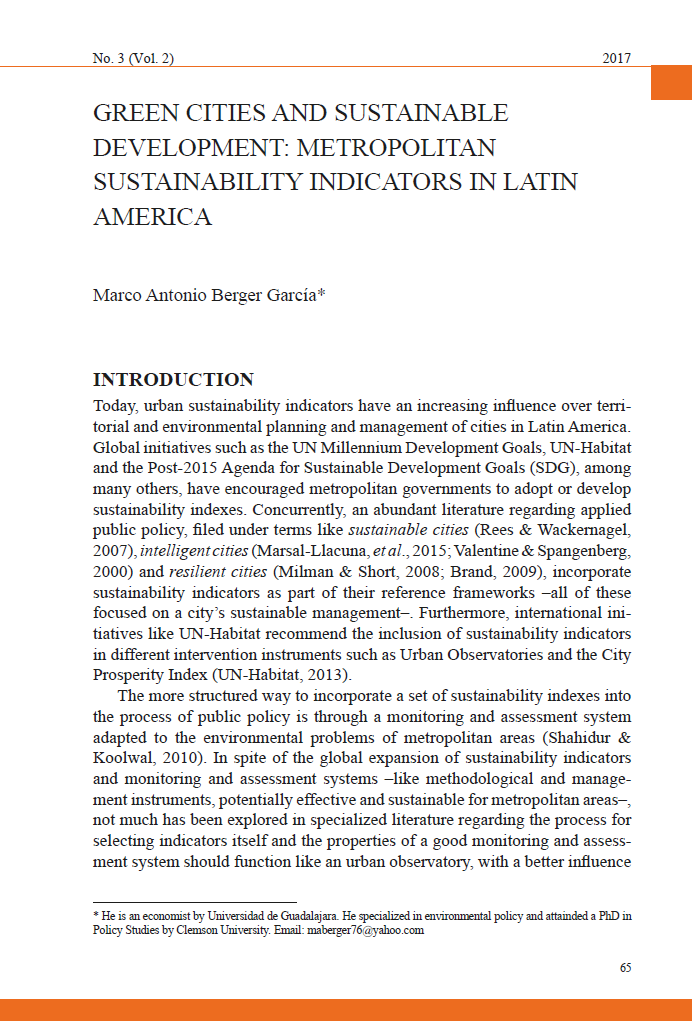Green cities and sustainable development: metropolitan sustainability indicators in Latin America
Palabras clave:
sustainable development, metropolitan sustainability, Latin AmericaResumen
Today, urban sustainability indicators have an increasing influence over territorial and environmental planning and management of cities in Latin America. Global initiatives such as the UN Millennium Development Goals, UN-Habitat and the Post-2015 Agenda for Sustainable Development Goals (SDG), among many others, have encouraged metropolitan governments to adopt or develop sustainability indexes. Concurrently, an abundant literature regarding applied public policy, filed under terms like sustainable cities (Rees & Wackernagel, 2007), intelligent cities (Marsal-Llacuna, et al., 2015; Valentine & Spangenberg, 2000) and resilient cities (Milman & Short, 2008; Brand, 2009), incorporate sustainability indicators as part of their reference frameworks –all of these focused on a city’s sustainable management–. Furthermore, international initiatives like UN-Habitat recommend the inclusion of sustainability indicators in different intervention instruments such as Urban Observatories and the City Prosperity Index (UN-Habitat, 2013).
Descargas
Publicado
Cómo citar
Número
Sección
Licencia

Esta obra está bajo una licencia internacional Creative Commons Atribución-NoComercial-CompartirIgual 4.0.




